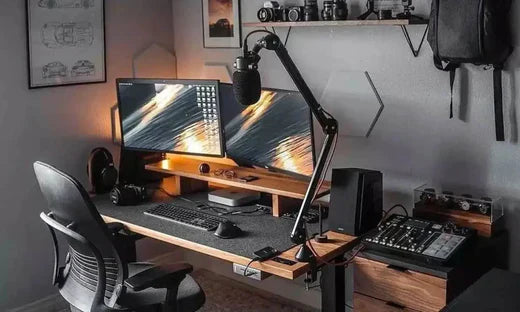What Are the Most Effective Communication Strategies for Students with APD?

Auditory Processing Disorder (APD) presents unique challenges for students, often affecting how they interpret and respond to auditory information. This can impact day-to-day interactions in the classroom and school environment, leading to potential misunderstandings and frustrations. Implementing effective communication strategies is essential for improving the educational experience and overall well-being of students with APD. By employing a combination of visual aids, repetition, and written instructions, students with APD can better process information and engage in learning more successfully.
Adjustments like slowing down speech and using short, clear sentences enable students with APD to process information at their own pace. Additionally, using APD accommodations for the classroom can help students with APD have the support necessary for academic success. Providing a supportive environment both at school and at home is crucial for helping students with APD thrive and manage their condition more effectively.
This content is intended for informational purposes only and should not be construed as medical advice. Always consult with a qualified healthcare provider for medical concerns.
Key Takeaways
- Effective communication strategies are vital for students with APD.
- Using visual aids and clear speech improves understanding.
- Accommodations support academic and personal success.
These key takeaways emphasize the importance of tailored communication strategies in helping students with APD thrive academically and socially.
Understanding APD in Students
Students with Auditory Processing Disorder (APD) often face unique challenges related to interpreting sounds effectively. APD affects the brain's ability to process auditory information, which can significantly impact communication and daily activities.
Characteristics and Challenges
Students with APD typically experience difficulty distinguishing sounds in noisy environments and may struggle with following conversations. This is due to the central auditory nervous system's inability to process sounds accurately. Listening can be especially taxing in group settings where background noise is present. Distractibility and issues with working memory are common, leading to misunderstandings in verbal communication. It's essential to consider the prevalence of co-occurring conditions like dyslexia, ADD, or ADHD, which can exacerbate these challenges.
Diagnosis and Co-Occurring Disorders
Diagnosing APD in students involves a series of tests to assess auditory processing skills. Audiologists conduct various assessments to rule out hearing loss and measure specific auditory capacities. Co-occurring disorders, such as language processing disorder, expressive language disorder, or autism, are frequently identified alongside APD. In some cases, APD can be mistaken for attention-related disorders like ADHD, due to overlapping symptoms such as distractibility and attentional challenges.
Impact on School Life
The effects of APD extend beyond mere communication difficulties, influencing numerous aspects of school life. For example, students may struggle with tasks that require auditory memory retention or maintaining focus in noisy classrooms. This condition can affect social interactions, schoolwork, and extracurricular activities. Students with APD may employ coping mechanisms, such as lip reading or relying on visual aids, to enhance their communication abilities. Understanding these impacts is crucial for fostering supportive environments where students with APD can succeed.
Strategies and Interventions for APD Management in the Classroom
Effective management of Auditory Processing Disorder (APD) often involves a combination of therapeutic methods, the use of technological aids, and specific accommodations in educational environments. Tailoring these strategies to individual needs can significantly improve communication and overall quality of life for students affected by APD.
Therapeutic Approaches
Therapists employ various methods to address APD, focusing on enhancing listening skills and auditory comprehension. Speech-language therapy helps improve both expressive and receptive language abilities, ensuring students better understand and produce spoken language. Occupational therapy can support auditory processing tasks, such as sound discrimination and following directions, through structured exercises.
Auditory training programs, often conducted by an audiologist, target skills like auditory closure and dichotic listening. These programs may also involve tasks designed to improve temporal processing and binaural interaction. Evidence-based practices ensure the effectiveness of these interventions, contributing to improved communication outcomes.
Technological Aids and Classroom Modifications
Utilizing technological aids is crucial in supporting students with APD. Devices such as FM systems or remote microphone systems can amplify sound and reduce background noise, aiding in sound discrimination and auditory comprehension. These systems are particularly beneficial in challenging listening environments like classrooms or group activities.
In addition to FM systems, visual aids—such as written language supports and visual cues—enhance understanding and retention of verbal instructions. For students experiencing severe auditory difficulties, hearing aids might be recommended, alongside amplification devices to improve auditory task performance. Computer-assisted programs provide additional support through interactive and engaging activities that bolster auditory skills.
Classroom and Educational Accommodations
Accommodations in educational settings play a key role in minimizing communication difficulties. An individualized education program (IEP) or 504 plan can outline specific needs and interventions, such as seating arrangements for optimal listening and pre-teaching of complex material.
Allowing extra time for tasks and incorporating repetition of instructions can also benefit students with APD. Fostering a supportive environment is essential for maintaining self-esteem and ensuring that academic goals are met. Regular collaboration with a speech-language pathologist can further refine these accommodations, tailoring them to shifting needs and capabilities.
Conclusion
Students with Auditory Processing Disorder (APD) benefit greatly from targeted communication strategies. These strategies often include gaining the student's full attention before speaking and ensuring they can clearly see the speaker's face for effective lip-reading.
Implementing structured routines and using visual cues can enhance communication. Additionally, the use of assistive listening devices may significantly improve their understanding of classroom conversations and instructions.















